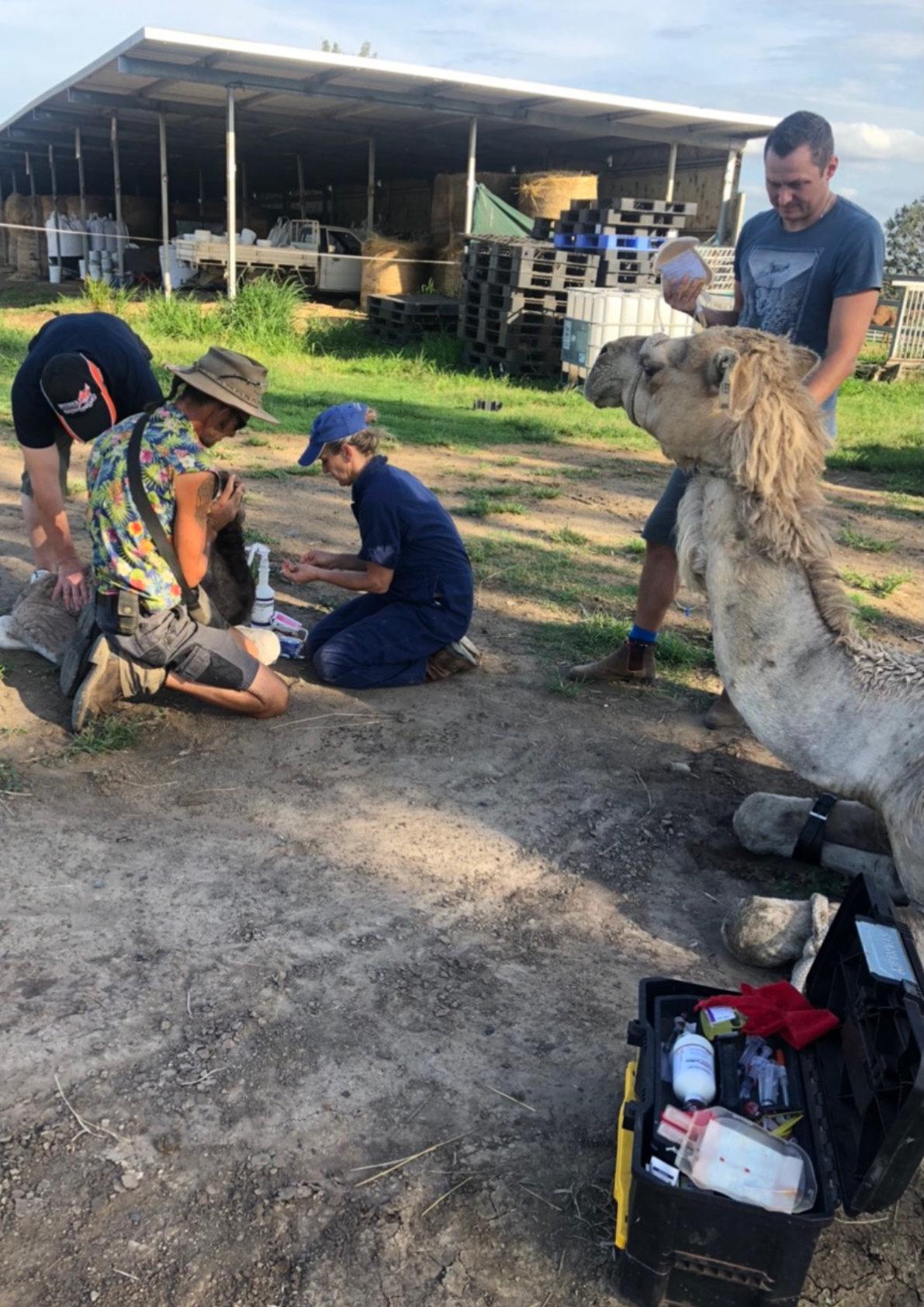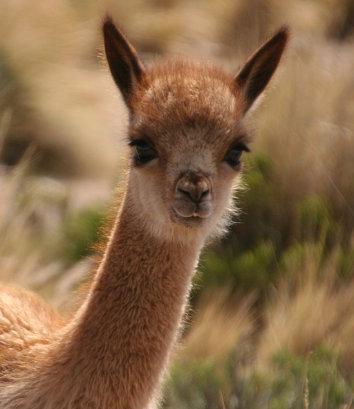
4 minute read
Failure To Thrive?
THE PLASMA SUCCESS STORY
By Dr Margie Bale
Advertisement
I don’t think there is anything more heartbreaking than watching a beloved Camelid deteriorate slowly As a vet it is soul destroying to see a perfectly formed neonate fail to thrive, or an old faithful camel/alpaca slowly lose weight and die despite all our efforts to treat .
For the new borns , This “failure to thrive “ in a cria/calf (a newborn alpaca is known as a cria, a newborn camel as a calf) o�en progresses slowly at first. The first 12-24 hours the cria is just a bit slow to stand, slow to get around , just seems “doughy. “Then a�er a few weeks it just starts to go downhill, the infec�ons start and it struggles to gain weight. Fading calf or fading cria syndrome is real and devasta�ng. For an older camelid they slowly lose condi�on and waste away. The first 12 hours of a cria /calfs life will set up the animal’s immune system for the rest of its life. A�er 24 hours, the an�body cocktail of the colostrum (that first milk ) cannot be absorbed as well in the new born stomach. So that first 24 hours is crucial.
The colostrum contains an�bodies, protein building blocks for the immune system. It contains long chain, large protein molecules that kick start the defences in the newborn. It contains a blueprint, a history of all the immune challenges the mother has faced in her life�me - the an�bodies, These an�bodies naturally protect the calf against these immune challenges.
In Australia we are so incredibly lucky to have a tailormade solu�on to the problem of this Failure of Passive Transfer. It is an Australian product made in Queensland, called CamelPlas.

Camelplas is used to supplement the immune response system of alpacas, llama and camelid species suffering from a range of immune deficiencies. Rich in gamma globulins, Camelplas is collected from hyperimmunised donor dromedary camels that reside at the Plasvacc plasma produc�on facility, the only facility of its kind in Australia. Camelplas is used to supplement the immune system of camels and is a highly effec�ve treatment for Failure of Passive Transfer (FTP) and Par�al Failure of Passive Transfer (PFPT) in alpaca cria. Camelplas can also be used to great effect as a suppor�ve therapy for a range of condi�ons, such as diarrhoea, coli�s, renal condi�ons and ac�ve infec�ons. Camelplas has been proven to be completely safe and effec�ve for all camelid species, including alpacas and llamas. I have been using Camel Plas for as long as they have been making it with great success, not just in newborns but in adult alpacas and camels also. Adults that have been losing protein through worm infesta�ons, chronic disease or recovering from surgery or �ck paralysis .
Recently, I have been working with Plasvacc on a research project. Currently the plasma product is available in a 300 ml bag of frozen plasma, administered intravenously by a veterinarian to the animal. As I only work now as a veterinarian with camelids, a lot of that work is with dairy camels, I wanted to see If I could tailor make a product, specific to the immune challenges faced in a dairy intensive system . In a camel dairy, the dam only produces milk while the calf is with her. If the calf dies for any reason then the farmer has lost the milk yield from that animal for the en�re lacta�on ( up to 14 months ) so I o�en call it “ keeping a cow calf unit alive “.
A camel calf is usually born at around 35-40 kg. therefore, it needs a higher volume of plasma administered in total. I also wanted to tailor the plasma product to the immunological needs of a dairy farm. We set up an experiment where I vaccinated (hyper s�mulated) the donor animals against diseases common to produc�on loss – Ecoli, Rotavirus, Lepto, and Salmonella. I had iden�fied these as the main causes of neonatal loss in dairy calves over the years. I also administered a slow release Selenium product to the donor animals so the product has a high level of selenium also.
I am currently in the process of data collec�on but at this early stage, results are looking very promising. A�er a transfusion, the TOTAL PROTIEN amount in the calf increases o�en from 0 g/L to at least 70g/L. The generally accepted TP level is 55 g/L. I am running further tests on iden�fying specific an�bodies and also a more detailed breakdown of the immunoglobulins specifically.
At this early stage I would like to bring your a�en�on to the anecdotal evidence of success of this product. It is nothing short of miraculous, and as a scien�st, I don’t say that lightly. This year every single calf that was born, that I was able to get to, received the plasma. For the first �me I have had ZERO neonatal calf deaths across three farms.
And it’s not just for the newborns.













